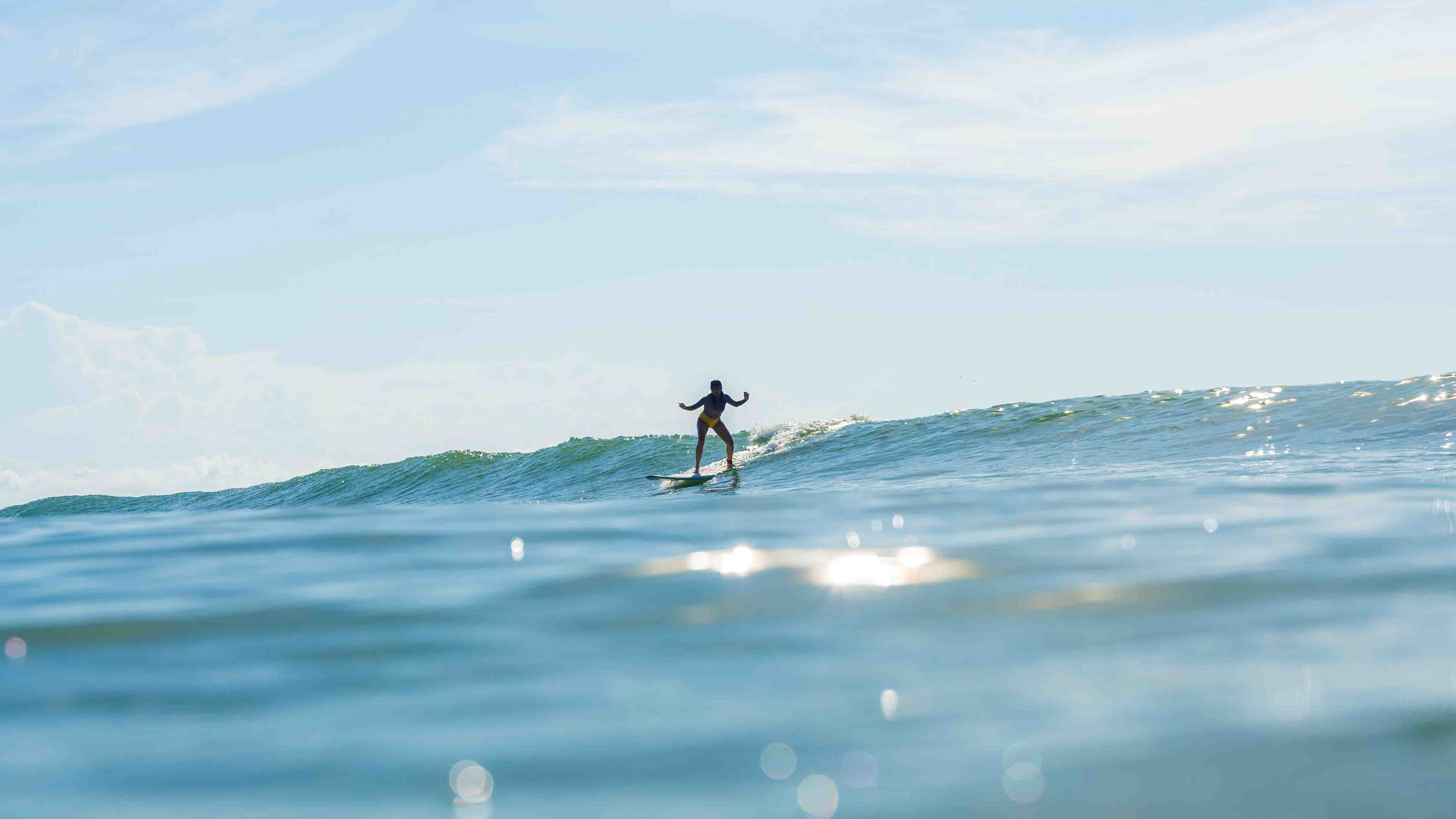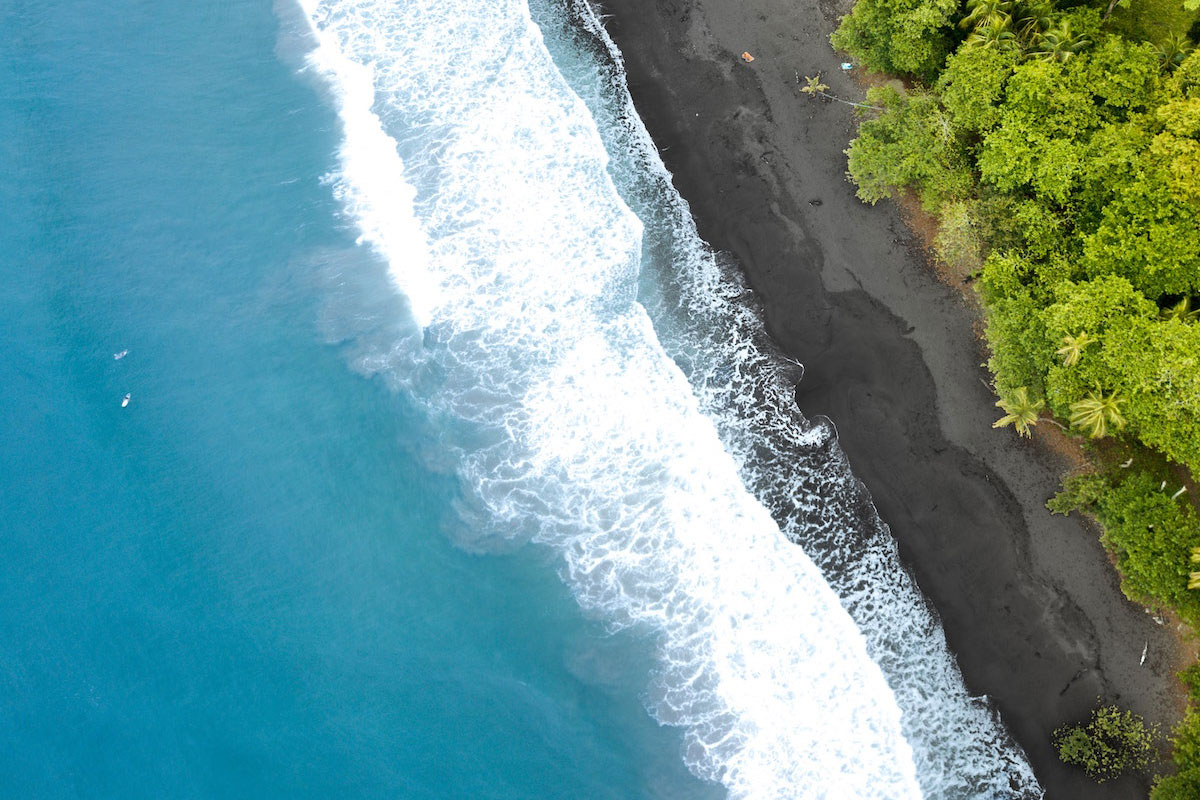
26 Nov Beginner’s Guide to Costa Rica Surfing: 11 Things You Must Know
Looking to start surfing in Costa Rica?
Or maybe you’re already a good surfer looking for long point breaks of warm tropical water?
Costa Rica surfing is a top choice for most beginners and most expert surfers. Notably, this Central American paradise offers a wealth of beautiful sandy beaches, warm waters year-round. Moreover, the minimal COVID travel restrictions, makes the island of Costa Rica surf capital for beginner surfers and surf enthusiasts.
If that’s not tempting enough, Costa Rica also ranked high on the Happy Planet Index in 2009, 2012, and 2016. If you seek safe travel, friendly lineups, and a laid-back atmosphere, then the Costa Rica surfing scene and Costa Rica surf towns are perfect for you.
But don’t just take our word for it; you can easily see for yourself. In this guide, we’ll provide a comprehensive overview of how the Costa Rica surf landscape is perfect for learning how to surf.
First, let’s discuss why Costa Rica is a prime surf destination for beginners.
Before we begin though, let’s quickly discuss why Costa Rica is the best spot for beginner surfers.
Why Costa Rica Surfing is Perfect For Beginners?
Costa Rica is a fantastic place to learn surfing for so many reasons.
The fact that guests are often blown away by just how quickly they progress is proof enough. But what is it that makes Costa Rica so great for beginners? Here’s a quick breakdown:
- There’s an array of gentle waves
- The water is warm throughout the year
- There are many friendly surf towns
- You can still find uncrowded surf spots
- The authentic tropical surf culture
- Surf coaching is always available (learn more about out our Costa Rica surf coaching here)
- There’s an ever-present relaxed atmosphere
If you’re a beginner surfer in Costa Rica looking to surf beautiful, warm, uncrowded waves, our oceanfront surf & yoga retreat just might be exactly what you’re looking for! We offer dedicated, bilingual surf coaching for all levels, and it’s the perfect place in Costa Rica to learn how to surf.
Learn more about our surf & yoga retreat here.
1. Perfect Waves for beginners
Costa Rica provides ideal conditions for beginner surfers. Furthermore, surfing Costa Rica waves are easier as they are frequently knee to chest high, not to mention the beach-to-takeoff zone paddle.
Surfing Costa Rica provides a spectrum of wave qualities. Not to mention that its common knowledge how some waves are more suited to certain skill levels than others.
The large, powerful waves found in many world-class surf destinations should only be ridden by the most experienced surfers. Conversely, small, gentle, close-to-the-shore waves are more suitable to beginners.
This is because the level of technical ability required to surf a wave is more or less related to the size of the wave.
Generally speaking, the smaller the wave, the more manageable it is for new surfers to ride. And while Costa Rica surfing conditions are great for seasoned riders, the high season (Dec-Mar) is perfect for beginners.
What’s more, the main beaches nearby our surf resort are sand and stone bottom (not sharp coral like the Caribbean coastline). Given their remoteness, you won’t need to worry about getting in the way of other surfers.
This all adds up and makes the many Costa Rican waves nearby our surf camp safe and comfortable for you to learn the foundations of riding a surfboard.
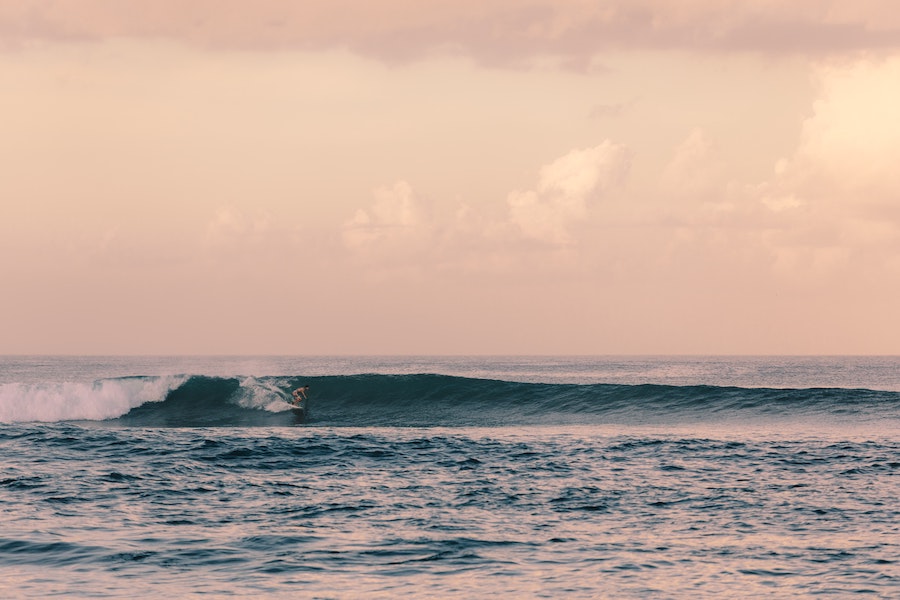
2. Uncrowded Surf Spots
While Costa Rica is a well-known surf destination, there are still uncrowded surf breaks that offer the trademarks of a great beginner surfers spot. Most of these are conveniently close to our surf camp, making it easy to enjoy waves with new friends or family.
The Costa Rica surfing destination covers areas such as Tamarindo and Santa Teresa which are full of surfboard carrying, sandals-wearing tourists.
A large percentage of these visiting surfers come from the United States and Canada, however, you’ll also meet groups of Europeans, Israelis and Australians.
Meeting with groups from different countries is awesome if you love to mingle with different cultures. But if you dream of learning to surf in uncrowded waves, it can be a bummer.
Fortunately, there still exist surf breaks in Costa Rica that have the trademarks of a good spot for beginner surfers (rolling waves, easy access, sand bottom) will less crowds of people.
We certainly don’t recommend trying to find these special spots on your own.
Without local knowledge, this will lead to a lot of time-wasting and the chance of missing the perfect surf day.
3. Beginner Surfers season
Costa Rica’s beginner surf season runs from December to April, during the high season, which is perfect for those who are just starting out. The waves are more manageable for beginners, and the beaches remain uncrowded.
High season (dry season): December to March
Low season (green season): April to November
Prices, wave size, crowds and weather all differ depending on the season. As a rule of thumb, things are a little bit more hectic both price and crowd-wise during the high period.
This is due to a combination of Christmas and New Year holidays plus the fact that many people in the northern hemisphere escape the winter months by flying south.
On the plus side though, the weather is absolutely beautiful with lots of sun. The wave size is also on average much smaller and therefore better for beginners.
Regarding the low season (otherwise known as the Costa Rica green season due to the way in which increased rainfall transforms the countryside), Costa Rica surf weather can be temperamental with frequent storms.
The waves also grow in size making it appealing for experienced surfers. However, we can still find great beginner surfers spots that are relatively sheltered from large swell during this period.
For more information on the Central America surf seasons, check out our guide about the best time for surfing in Central America.
4. Sun Protection is Vital
In Australia, it’s hungry sharks that you need to worry about.
In Hawaii, its razor-sharp coral reefs and locals to watch out for.
And if you’re surfing in Europe, it’s that cold Atlantic water that bites.
But if you’re traveling to surf in Costa Rica, it’s the sun that could ruin your learning experience.
The powerful sun in Costa Rica, can be a major threat to surfers. Ensuring adequate sun protection, such as reef-safe sunscreen, zinc, a surf hat, and a long-sleeve rashguard, is essential to prevent sunburn.
Costa Rica is after all located close to the equator, with average daily temperatures that fluctuate between 72°F and 82°F (22°C and 28°C).
In the same way, the sun is still powerful on cloudy days. Moreover while in the water, you’re essentially exposed to it from above and below due to the glare. You can see why we put a lot of emphasis on being sun smart.
With that in mind, here’s what we recommend you bring in terms of sun protection so you don’t end up looking like a lobster after a surf lesson. As well as miss an epic Costa Rica surf session due to crazy sunburn.
- 50+ reef-safe sunscreen
- Zinc
- Surf hat
- Long-sleeve rashguard
However, for women who are particularly at risk of sunburn, leggings might also help. Additionally reef booties, serve a double purpose for people with sensitive feet by both shielding them from harsh rays and protecting them from cuts and abrasions.
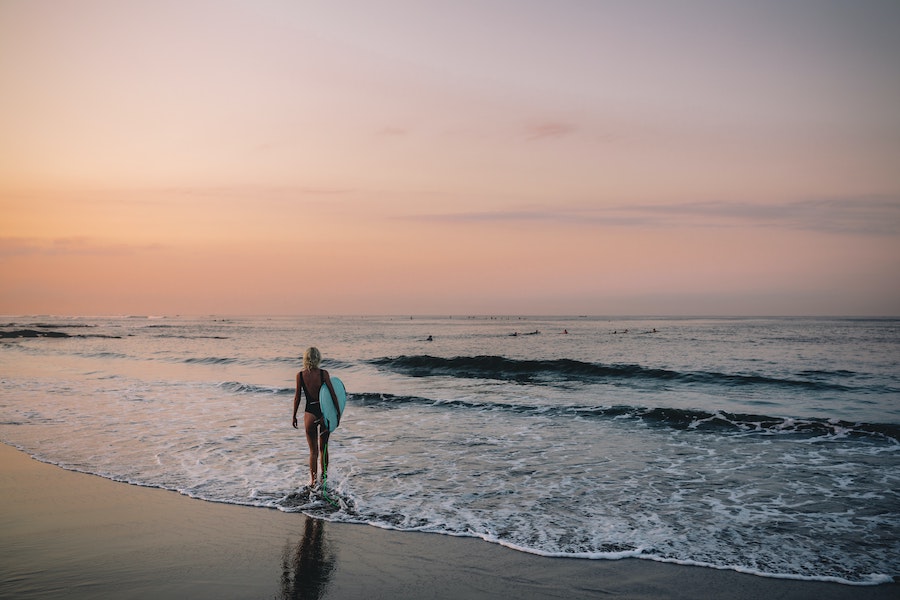
5. Diverse Costa Rica Surf Spots
One of our favorite things about Costa Rica is that it offers waves for all skill levels, from smooth and easy rides for beginners to more challenging ones for advanced surfers. With 12 surf spots near our surf camp, you’ll have easy access to a variety of waves.
Now, obviously as beginner surfers, you’ll be looking for smooth and easy waves to ride. But like learning anything, you need to be able to go out of your comfort zone in order to move to the next level.
This is where the wide variety of different beaches in Costa Rica come in handy.
You can begin surfing a beach break or a forgiving slow breaking point break (like the ones around our camp!) that offers slow and gentle rides. Then, as your confidence builds, you can gradually expose yourself to bigger, longer and more complicated waves.
This concept of gradual progression will see your surfing skills increase quickly as opposed to if you were forced to surf in less-than-ideal waves or tricky conditions.
The fact that we have 12 surf spots located nearby our surf camp also means you don’t need to travel far to find waves. You’re literally footsteps from the closest beach and we organize the schedule so that you get surf sessions per day during the most optimal tides.
Before you know it, you’ll be riding green waves, doing basic maneuvers and unlocking your inner Slater or Gilmore in no time at all.
6. Consistent Swell Help You Improve Faster in Surfing
With Costa Rica surf conditions being perfect for beginner surfers, it’s also worth noting that beaches in Costa Rica are very open to year-round Pacific Ocean swells. To put it in simple terms, a swell is a wave generated by strong winds and can travel a few thousand miles compared to regular waves.
Of course, there’s more swell in the green season given that there’s an increase in tropical storms that generate said swell. However, the dry season also delivers enough waves to keep you and your fellow beginners in the water.
Plus, it’s not like you need large green season waves anyway. So long as there’s a small pulse of swell that you can refine your technique on, you’re golden. You can trust us when we say that you’ll definitely find decent waves to ride in Costa Rica.
Since we know where all the best spots are, that means we know which waves work best depending on the swell size and conditions.
It’s this local knowledge that ensures you can surf the beaches in Costa Rica every day that the conditions permit. Correspondingly, this ties in nicely with our goal to maximize your learn-to-surf experience.
Basically, you’ll progress faster this way than if you were to visit a surf destination that’s more prone to flat spells (long periods of no waves).
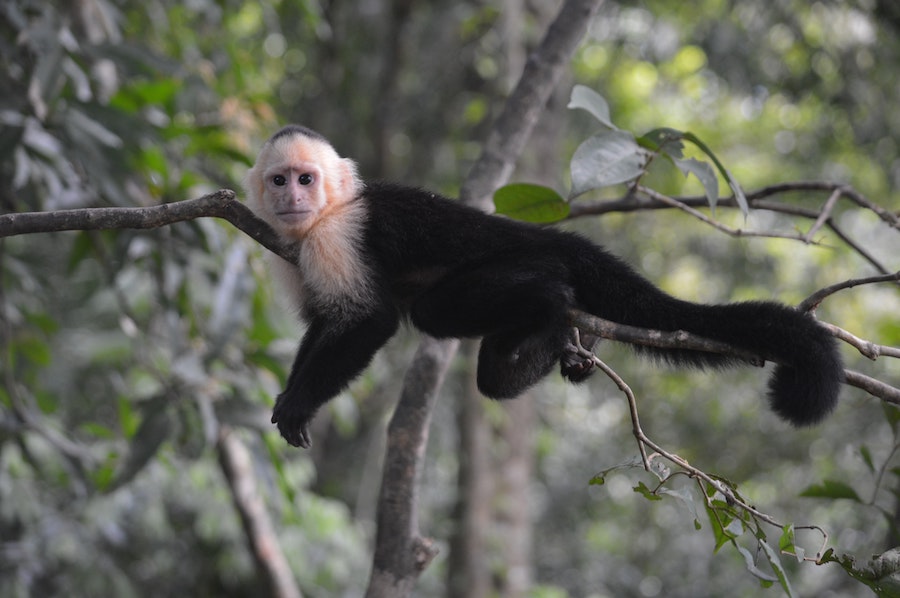
7. Breathtaking Natural Environment
The Costa Rica surf surroundings boasts of diverse microclimates. Because of this, you can experience various outdoor activities, wildlife, and lush vegetation, making it a paradise for nature lovers.
There’s nothing better to do but turn off the phone to relaxing and reconnecting with your true self whilst surrounded by family or friends.
Despite its small size, Costa Rica has some 30 different microclimates. This includes cool cloud forests, humid mangroves, pristine beaches and towering mountain ranges.
You can see whales breaching and finally get to picnic under lush palms on the sand. You can even spot as many native birds as possible or pluck exotic fruit, such as mangos, bananas, lemons, oranges, guava, guanabana, papaya or pineapple, straight from the trees or ground.
You’ll also be surrounded by monkeys, iguanas, tropical birds, sloths and an abundance of stunning flora and fauna no matter where you go.
In short, it’s pretty much paradise.
8. Pura Vida lifestyle
The “Pura Vida” lifestyle, which means “pure life” or “simple life” in Spanish, is a way of being in Costa Rica. It promotes gratitude and positivity, enhancing your overall experience. Expect to see and hear these two words everywhere in Costa Rica.
Originally coined around 50 years ago, Pura Vida is Spanish for “pure life” or “simple life”. Throughout the years, it’s proven to be more than just a phrase.
Pura Vida is a way of being for many Costa Ricans and the expats who call this wonderful country home. It’s about being grateful for what you have in life instead of dwelling on the negative. Nevertheless, it’s about having perspective and the wisdom to know that things will be alright.
In essence, it’s the Costa Rica concept that can help you tune into the rhythm of life… and maybe even catch a few life-changing waves in the process.
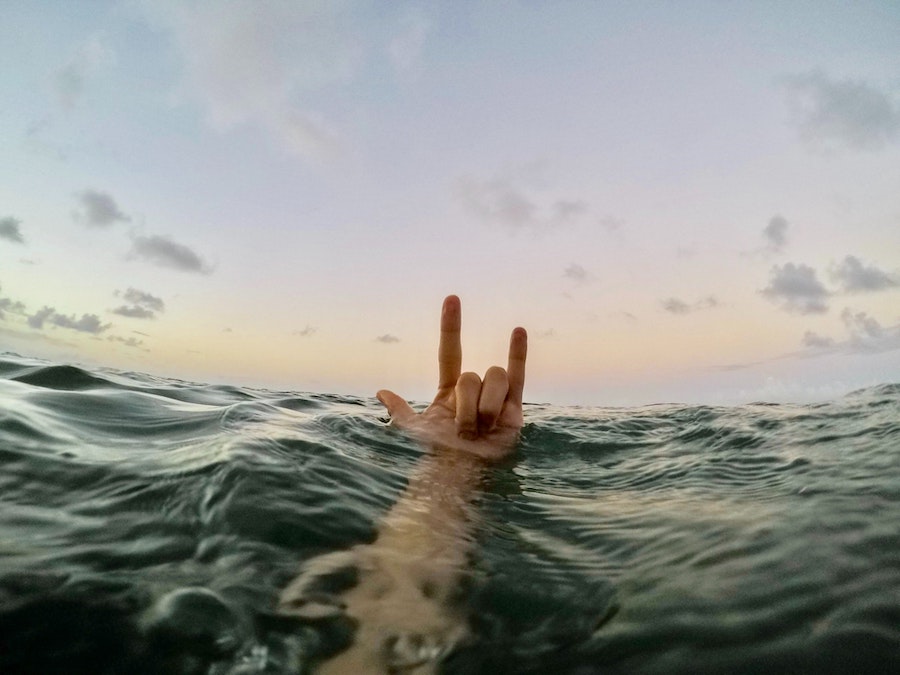
9. Costa Rica surfing needs no travel restrictions
Fortunately, Costa Rica’s borders are open to international tourists, with minimal COVID-19 restrictions. However, tourists must follow visa requirements and pandemic guidelines, but there’s no need for a negative COVID-19 test or quarantine upon arrival.
Tourists must meet the visa requirements and abide by the country’s relevant pandemic guidelines. However, you do not need to present a negative COVID-19 test or quarantine upon arrival.
Both Liberia and San José airports have flights operating every day and our surf camp is open for business.
We only ask that you stick to the recommended sanitary protocols if you do engage in any tourist activities while staying here. This includes wearing a mask in some public places and washing your hands or allowing your temperature to be taken if requested.
If you’ve been vaccinated, it’s simply a matter of presenting proof of your vaccination and filling in an online form 48h before arrival.
However, there may be requirements from your own government regarding negative COVID-19 tests on return. For example, the U.S Embassy in Costa Rica requests that you carry out a test 72h before heading back to the U.S.
10. Don’t bring your own board: Costa Rica surf boards are always available
Costa Rica has a thriving surf scene with numerous surf towns and stores, offering a variety of boards. Moreover, you won’t have to worry about buying or transporting your board and you can experiment with different board types.
The beauty of this is you don’t have to worry about buying a new board for your trip or paying exorbitant airline baggage fees to transport said board.
Better yet, you don’t need to stress about traveling with a surfboard. After all, it’s not like flying with a skateboard. Surfboards are big, clunky and not at all that Uber-friendly.
When you book with us, you’ll have access to a range of different boards to try. This means that you can sample different shapes and sizes to find what works best.
For beginner surfers, this is an awesome advantage, since it means you can experiment with smaller boards as you progress.
Then, once you feel confident enough to own your first board, you can go ahead and buy one. Just make sure you check out our longboard buying guide before you do!
11. Travel insurance is essential
Lastly, having travel insurance is crucial. It covers potential injuries and emergencies that may occur during your adventure.
Surfing is a physical activity and bumps and bruises do occur.
A serious injury could be a nightmare in Costa Rica if you aren’t covered by insurance. Thus, to ensure a worry-free surf trip, get insured.
There are so many cases of this happening and in the end, the insanely expensive medical bill could ruin your dream vacation.
You’ve probably heard it all before, but if you can’t afford travel insurance then you can’t afford to travel.
Furthermore, get a policy with a “cancel for any reason” protection, for added security which can be a huge advantage in these uncertain times.
We also recommend checking out the list of travel insurance plans recommended and therefore permitted for travel to Costa Rica on the Visit Costa Rica website.
Note: These policies are merely examples. We have not reviewed them in-depth. Please review them yourself to ascertain whether these policies are right for you.
Best Places to Learn to Surf in Costa Rica
Now that we’ve covered helpful tips for beginners surfing in Costa Rica, we don’t want to leave you hanging on where to plan your beginner surf trip! So here are the best beginner surf spots in Costa Rica.
Pavones
Home to the second longest left in the world, warm waters, and surrounded by gorgeous lush jungle, Pavones is one of the best places to learn to surf in Costa Rica- with a caveat. Since this area is so remote, and the famous Pavones break can be intense at times, this is really only a suitable beginner surf spot if you visit the area through a surf camp with skilled instructors and local knowledge.
The good news- this is exactly what we offer! Our all inclusive surf & yoga retreat includes two daily surf lessons, surf theory, and video analyses of your surfing with highly skilled coaches.
If you want to dive head first into the sport of surfing in one of the most beautiful parts of Costa Rica, book a surf retreat with Surf Expedition. We even have our own private wave out front.
Tamarindo
Tamarindo is one of the most popular places to learn to surf in Costa Rica thanks to its sandy beach with very few rocks, and plethora of surf schools. Plus, it’s extremely easy to get to. For visitors flying into the Liberia International Airport, Tamarindo is only about a 90 minute drive
Jaco
Jaco is another popular spot for beginner surfers in Costa Rica. Located only a 90 minute drive from Costa Rica’s bigger international airport, SJO, this bustling beach town is great for visitors who don’t have time to travel to more remote beach areas, but still want to learn to surf on a soft sandy beach.
The best part of Jaco to learn to surf is the far southern end of the beach, which is conveniently where most of the surf shops and surf schools are located! There are plenty of rolling white water waves here for absolute beginners to get their feet under them, and also opportunities for beginners to catch their very first green waves here.
Playa Carmen in Santa Teresa
Santa Teresa is a fantastic place to learn to surf in Costa Rica, especially if you’re looking to enjoy a more laid back beach vibe. Santa Teresa is very relaxed, with only one main road through the town littered with surf shops, bars, restaurants, and hotels. This surf town has several different places to surf, but the best place for beginners to surf is all the way south at Playa Carmen.
Playa Carmen is mostly a soft sandy beach break, with a few rocks in the water that you can easily spot and watch out for. During smaller swells in the dry season (November-April), beginners can easily paddle out to the lineup at Playa Carmen and catch green waves.
No matter where you learn to surf in Costa Rica, one thing rings true- the quality of your instruction is just as important, if not more important than the waves themselves. At our surf and yoga retreat, we pride ourselves for having expert instructors who are ready to teach you the ropes of surfing, and leave you forever hooked!
Beginners Guide to Surfing in Costa Rica: Final Thoughts
That’s a wrap on our guide to beginner surfing in Costa Rica! If you’re a beginner surfer on the fence about planning a surf trip to Costa Rica, our most important piece of advice to you is this: Just do it. You certainly won’t regret it.
What’s Next?
Book a surf trip in Costa Rica today! Get ready for the surf experience of your life, read our surf seasons in Central America guide to find out the best times to travel to Costa Rica.


